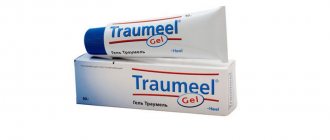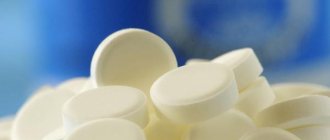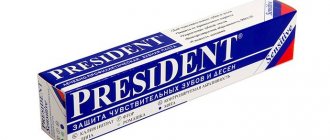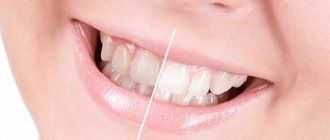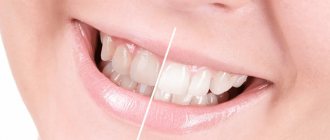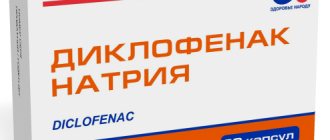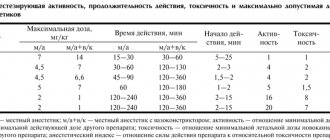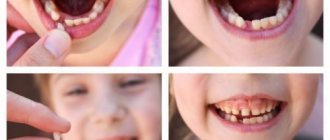1184
Devitalization in dentistry is the destruction (killing) of the pulp for the purpose of its subsequent painless removal.
The procedure is carried out using devitalization drugs that kill the nerve bundle of the pulp and cause the death of its tissue.
One of the drugs popular among dentists is Kaustinerv, which will be discussed further.
Indications and contraindications
Killing the pulp using devitalization pastes is used in cases where it is impossible to use injection or application methods of local anesthesia.
The following reasons may lead to such situations:
- hypersensitivity of the patient's body to anesthetics, in particular to lidocaine;
- insurmountable fear of the patient (usually children) to injections;
- the presence of severe systemic diseases;
- failures (insufficient pain relief) of the injection or application method.
General information
Devitalization in the dental field is the process of killing the pulp for its further removal without pain. The process is possible with the use of devitalization agents, which can kill the nerve processes of the pulp and cause the death of its tissues.
What does a tooth look like?
The surface of a healthy tooth is covered with white enamel, underneath is dentin. The inside of the tooth is made up of pulp with small blood vessels and nerves.
The number of large nerves directly depends on the structure of the root and the number of its processes. And the bundle of nerves in the pulp is formed by compact nerve fibers.
When the crown is destroyed down to the pulp, increased pain begins to appear.
Why is removal necessary?
It is possible to exclude nerve removal if therapy begins at the primary stage of dentin destruction. Pulpitis, which has passed into the periodontium, is a symbol of the transformation of the disease. Then the elimination of the nerve or pulp cannot be avoided.
Surgery is necessary when a tooth is deformed. Defragmentation is possible from caries or physical trauma.
Symptoms of inevitable depulpation:
- aching soreness that occurs for no reason and persists for a long time. Has no tendency to complacency.
- episodic pain. The reasons are a change in the level of humidity in the room, from cold or hot products, from eating a large amount of sweets. After eliminating the source of irritation, pain is still present.
- an unnatural dental arrangement determined from an anatomical point of view.
- inflammatory process in the pulp or the onset of periodontitis.
- mechanical trauma with damage to dentin.
Instructions for use
Devitalization is performed in the following sequence.
- A carious cavity is developed , and a recess is made at its bottom to place the paste at a minimum distance from the pulp.
- A small ball (about the size of a pinhead) is made from the paste and carefully, without pressure, placed into the hole.
- A temporary filling is placed on the tooth , and the patient is sent home. A repeat visit is scheduled after a few days, depending on the duration of action of the devitalization paste.
- At the next visit, the temporary filling is opened and removed along with the devitalizing drug. Under the influence of arsenic or paraformaldehyde, the pulp becomes fibrous and can be removed easily and painlessly.
Sometimes, due to severe pain, it is not possible to get close to the pulp. In this case, devitalization is performed in two steps.
After the first application of the medicine, due to a decrease in the sensitivity of dentin, it becomes possible to get closer to the pulp.
Next, endodontic treatment of the tooth is carried out according to the standard scheme:
- Access to the coronal cavity is created using burs , the affected tooth tissue is excised and removed.
- The tooth cavity is opened and the contents of the pulp chamber are removed.
- Root canals are treated. Mechanical treatment is combined with medication using antiseptic, degreasing and hydrating drugs.
- Obturation (filling) of the root canals is carried out with cement or composite material.
- Finally, the crown part of the tooth is formed , which, if necessary, can be covered with an artificial filling.
Details
Carrying out a procedure in dentistry
The dentist drills the canal and later injects medicine into it. The speed of the therapy period is directly dependent on the severity of the defect and personal indicators.
The most widespread are arsenic pastes.
Release form "Kaustinerv"
Rapid - thirty percent composition is arsenic anhydride, lidocaine, menthol, ephedrine, phenol are also included. Impact - thrombocytosis of blood vessels of the pulp - oxygen starvation and tissue death.
The dentist brings the medicine as close as possible to the area of devitalization. The result and speed of action of the product are directly dependent on the thickness of the dentin. The average is a couple or three days.
Forte - lidocaine, paraformaldehyde, phenol.
It is used for pulp extirpation without the use of arsenic. It works as an antiseptic and mummifier for pulp tissue, causing its necrosis. Arsenical – contains arsenic anhydride. The product is produced in plastic packaging, which is placed in a cardboard box with instructions for use. Impact - thrombocytosis of blood vessels of the pulp - oxygen starvation and tissue death.
Instructions
The doctor places a spherical piece of the product at the bottom of the cavity, eliminating pressure. The dental unit is sealed with a temporary filling. After seven to ten days, the cavity is opened (in the case of using arsenic Kaustinerv Rapid and Kaustinerv Arsenic - three days). The temporary filling is removed with the medicine. The pulp breaks down into fibers, making it easy to remove.
The dosage is always the same - the ball is no larger than a millimeter in size.
Allergy and irritation are possible in case of hypersensitivity to the ingredients of the material.
The use of paste implies a solid state; the cavity must be carefully covered with a temporary filling to prevent the process of evaporation of the active substance.
It is necessary to stop driving for a while.
Storage temperature is no more than twenty-five degrees Celsius. The lid is sealed tightly. After opening, the medicine can be stored for one year.
Dosage and precautions
When using all devitalization pastes, the same dosage is used - a tiny ball of paste the size of a pinhead (about 1 mm in diameter). The maximum permissible dose is 10 mg.
Since these are highly toxic drugs, the following precautions must be observed:
- It is necessary to prevent accidental swallowing of the paste.
- For a temporary filling, use cement of a weak consistency so that it can be opened without excessive force, which could cause the release of paraformaldehyde or arsenic.
- The temporary filling must be absolutely airtight. If arsenic or paraform comes into contact with the mucous membrane of the gum or cheek, irritation and necrosis may occur. If a leak does occur, the affected area should be rinsed quickly with water.
- The paste should not be left in the tooth for more than 7 days.
- The medicine ball should be placed in the place prepared for it without strong pressure.
Important! Devitalization drugs contain substances that can give a positive reaction in a doping test.
Contraindications for devitalization are:
- allergy to the ingredients of the devitalizing paste (most often the culprit is lidocaine);
- age up to 30 months;
- glaucoma;
- anuria.
All the most important information about the purpose and use of the drug Kaustinerv in dentistry
1141
In modern dentistry, Kaustinerv paste is widely used, which is a means for painless removal of dental pulp.
The drug is used as part of chemical devitalization and allows to minimize negative sensations for the patient.
How long does it take to die
Killing the nerve is called a devitalization procedure. This relieves periodic pain when eating cold, hot or sweet foods. The nerve dies from a day to several days or even months - it all depends on the method used for this.
If a special remedy is used, then you won’t have to wait long - the well-known arsenic neutralizes nerve endings within 24 hours or even less. If the decision was made not to touch the entire destroyed tooth, then you will have to endure periodic unbearable pain for several months - killing occurs due to developing dangerous bacteria.
It is prohibited to resort to such a method, because it is fraught with the formation of a cyst due to the discarded “waste” into the gums and pulp.
Non Arsenic - description. Kaustinerv endodontic – description
Non Arsenic is a pulp devitalization paste that does not contain arsenic. It can be used either independently or in addition to arsenic-containing paste.
The main component of Non Arsenic is trioxymethylene, a very strong antiseptic that causes tissue necrosis in high concentrations. Devitalization with its use occurs within 5-7 days, while it does not have a toxic effect on periodontal tissue. The paste also contains lidocaine, which prevents a painful reaction due to its local anesthetic effect.
Application
The first step is to remove the dentin affected by caries, and then open the pulp chamber as wide as possible.
Apply paste to the bottom of the resulting cavity, rolled into a ball with a diameter of 1-2 millimeters. Close the cavity with artificial liquid dentin. After 5-7 days, the whole thing should be opened and the pulp removed.
During this time, the pulp usually becomes fibrous and is very easy to remove.
In some cases, it is not possible to immediately achieve direct contact with the pulp, so you will first have to apply the paste at some distance from it in order to cause partial tissue necrosis, and only then apply the paste directly to the pulp itself.
Packaging and storage conditions
Non Arsenic paste is available in small glass jars, each containing only 6.5 grams of paste. Jars should be stored in a cool, dark place for no longer than 18 months.
Storage conditions
Kaustinerv devitalizing pastes can be stored for up to six months at a temperature not exceeding 25 °C. The material in opened cans retains its performance properties for a year, provided the lid is tightly closed.
Additional conditions for use and storage of pastes are contained in the instructions.
The purpose of using arsenic in dentistry and analogue products.
In this publication we will talk about what a pediatric dentist surgeon does.
Here https://www.vash-dentist.ru/hirurgiya/rezektsiya/effektivnost-tsistektomii-zuba.html read about the indications and contraindications for dental cystectomy.
Analogues and prices
The following preparations can be used as a replacement for Caustinerf pastes:
- Depulpin. Contains paraformaldehyde. When used, side effects are possible in the form of pain, which gradually subside under the influence of the lidocaine contained in the paste. Release form – 3 g of paste placed in a syringe.
- Devital. Arsenic-free preparation containing 30 percent paraform.
The advantages of Devital include the absence of arsenic, the ability to be used for children, and the relatively short time for complete devitalization, usually 3-5 days. But sometimes canal cleaning and final filling can be done within 1-2 days. Available in 5 and 13 g in plastic and glass bottles. - Devit S. Contains paraformaldehyde, as well as auxiliary materials - lidocaine, creosote, paste former with filler. The average time of devitalization is 3-5 days.
Prices for pastes vary significantly, and depend primarily on the brand.
Approximate prices for devitalizing pastes are shown in the table.
| Trademark | Manufacturer | Active substance | Quantity, g | Price, rub |
| Kaustinerv Fort | Septodont (France) | Paraformaldehyde | 4,5 | From 4000 |
| Kaustinerv Rapide | Same | Arsenic oxide | 5,5 | From 2600 |
| Kaustinerv Arsenical | Same | Arsenic oxide | 6,5 | From 4000 |
| Depulpin | Voco (Germany) | Paraformaldehyde | 3 | From 3100 |
| Devital | TechnoDent (Russia) | Paraformaldehyde | 5 and 13 | From 200 |
| Devit S | VladMiVa (Russia) | Paraformaldehyde | 3 | From 120 |
Reviews
Have you ever had to undergo dental devitalization? If so, what agent was used to kill the pulp, and what sensations did you experience? Share with our site visitors by leaving your comment at the bottom of this page.
If you find an error, please select a piece of text and press Ctrl+Enter.
Tags medications pulpitis
Did you like the article? stay tuned
Previous article
How does Atatsamit cement work and in what cases is it used?
Next article
Profiles in dentistry - get right to the root
